Eight Decades of Excellence
From its initial focus on energy in the earliest days of the American oil and gas industry,
the success of the Hunt family of companies has allowed for growth in a variety of industries.
Eight Decades of Excellence
From its initial focus on energy in the earliest days of the American oil and gas industry,
the success of the Hunt family of companies has allowed for growth in a variety of industries.
Click through the years below to see some of Hunt's many achievements and accomplishments.

In November 1930, H.L. Hunt acquired the Daisy Bradford No. 3 from J.M. “Dad” Joiner near Kilgore, Texas. H.L. Hunt bought the lease out “lock, stock and barrel,” financing the deal with a first-of-its-kind agreement to make payments from future “down-the-hole” production. The Bradford No. 3 turned out to be the discovery well of the great East Texas oil field, which, at the time, was the greatest oil field in the world.
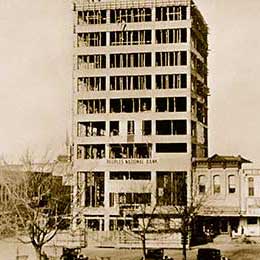
Hunt Oil Company was incorporated in Delaware on December 18, 1934. The first office was located in Tyler, Texas. The company moved to Dallas in 1937.
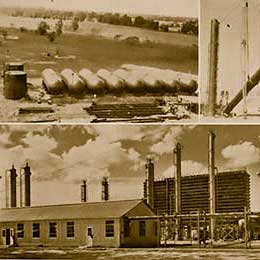
Hunt Oil Company founder H.L. Hunt firmly believed that over-drilling would kill oil fields prematurely. In 1940, the Long Lake Recycling Plant opened. He used this plant to conserve gas and maximize oil recovery from the East Texas field. Two years later, he supported the foundation of the East Texas Salt Water Disposal Company. By reinjecting salt water into a reservoir, good oil pressure could be maintained, and this enabled the East Texas field to supply a large amount of the fuel used by Allied forces in WWII.
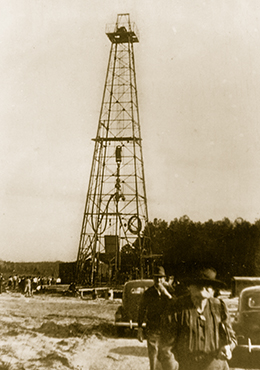
In 1944, Hunt Oil Company developed the first commercial oil well in Alabama. The A.R. Jackson No. 1 well was discovered in the Gilbertown field in Choctaw County, Alabama, near the Mississippi border.
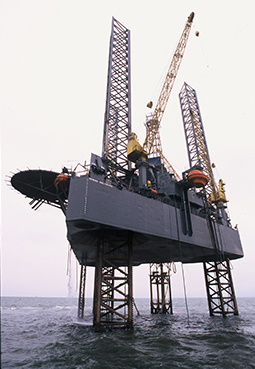
In 1958, Hunt Oil Company purchased six leases in the Gulf of Mexico comprising the Eugene Island Block 77 field. This was Hunt Oil's first major step into offshore exploration.
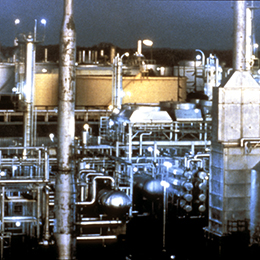
Hunt played a major role in the development of the Fairway field, a major oil field discovered in East Texas. More than 100 major and independent companies drilled in the field.

In 1965, Hunt led the effort to unitize the Fairway field, and the company was later chosen as the operator of the James Lime reservoir, which required pressure maintenance to optimize recovery.
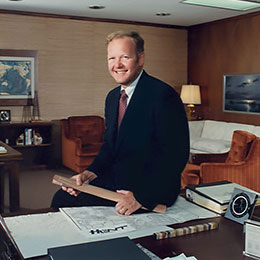
After H.L. Hunt's death at the age of 85 on November 29, 1974, Ray L. Hunt, at age 32, became Hunt Oil Company's new president in 1975.
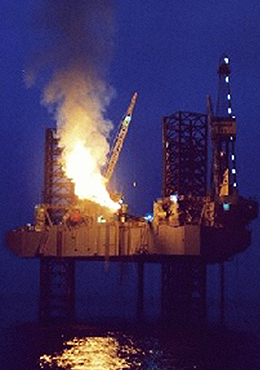
Hunt Oil Company achieved its first international success with the discovery of the Beatrice field in the British North Sea. Called by industry media “the discovery of the year in the North Sea,” the project was important, not because of its size (approximately 500 million barrels of oil in place) but, rather, because the rank wildcat discovered oil in an area of the North Sea that the industry believed was nonproductive. This discovery paved the way to greater international finds in the next decade.
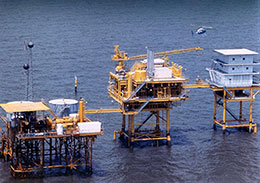
With antiquated computers (by today's standards) and manual stacking of data, Hunt Oil Company managed the industry's first three-dimensional offshore seismic study of the salt dome beneath the Eugene Island Block 77 field. The data led Hunt to identify and drill 17 successful deep gas wells in a row.

In the ancient nation of the Republic of Yemen, the company once again defied conventional wisdom to explore for oil where others chose not to look. In 1984, with what was called the “rankest wildcat” the company ever drilled, the Alif No. 1 well discovered the prolific Alif field and a new basin for industry exploration. The same field now fuels a new, world-class Yemen LNG processing plant.
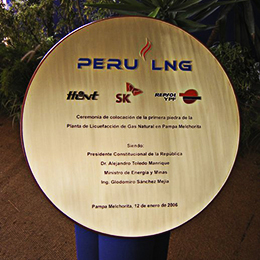
In December 2006, the PERU LNG project was officially launched. The project began in 2000, when Peru's government awarded Hunt Oil Company and its partners the contract to develop the upstream portion of one of South America's largest natural gas resources, the Camisea field.
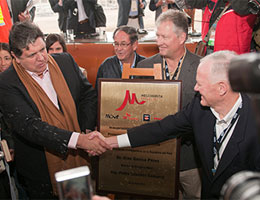
On June 10, 2010, PERU LNG and Peruvian government officials inaugurated the first gas liquefaction plant in South America. The two LNG storage tanks at Melchorita measure 80 meters in diameter and 52 meters in height, with the capacity to each hold 130,000 cubic meters of LNG.

The PERU LNG natural gas pipeline reaches an elevation of more than 4,900 meters above sea level as it crosses the Andes Mountains. It runs 408 kilometers from Ayacucho to the Pampa Melchorita processing plant on the Pacific coast of Peru. Guinness World Records certified this as the highest natural gas pipeline in the world.
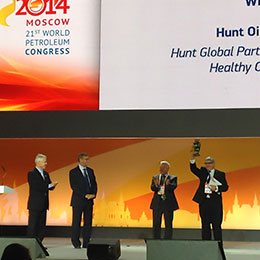
Hunt Global Partnerships was awarded the World Petroleum Council's Excellence Award in Social Responsibility at the 21st World Petroleum Congress.

On September 29, 2014, Ray Hunt announced a change to Hunt Consolidated's organizational structure, naming Hunter Hunt and Chris Kleinert co-presidents of Hunt Consolidated, Inc. Ray Hunt emphasized the importance of succession planning, especially in privately owned companies. The new titles were a formalization of the company's operations of the previous four years.